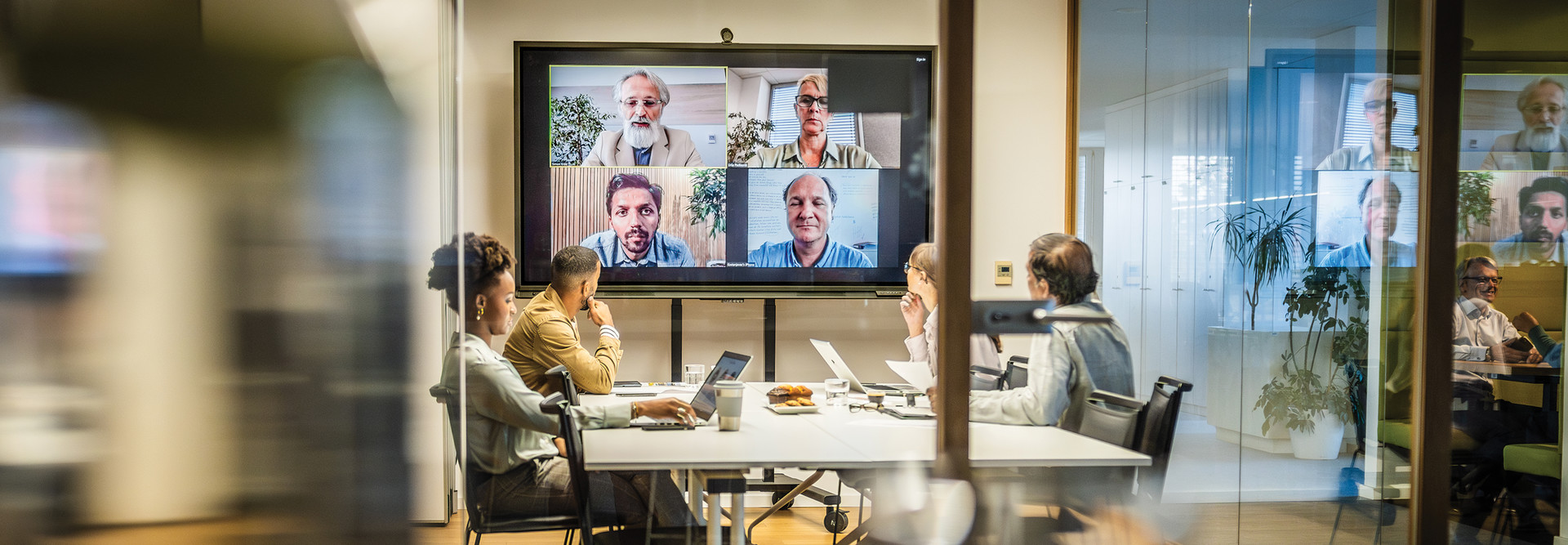Conference Rooms Are More Important Than Ever
Hosting an effective meeting is about the quality of the presentation and collaboration, not who is in the room. A good collaborator may be in any room, anywhere. Yet, paradoxically, an organization’s conference room is more important than ever. Because it serves as the hub for so many hybrid meetings, it must be equipped to support all participants.
What’s essential now is finding the right hybrid meeting setup that stimulates conversation, productivity and collaboration from virtually anywhere. This includes everything from display technology and furniture to cameras and sound.
All elements of a conference room, including technology and the room itself, must work together cohesively to ensure a quality experience from the moment an attendee enters the room, or logs on remotely, through the meeting’s conclusion. In response to this, manufacturers are designing technology to be more intuitive and easily integrated with other tools and videoconferencing solutions such as Microsoft Teams and Zoom.
READ MORE: 4 ways businesses are using Microsoft Copilot.
For companies striving to update their conference rooms for the hybrid work era, here are some suggestions to keep in mind:
- Display technology: Optimal image quality is crucial for virtual meetings. Businesses need display technology that allows everyone to participate without sacrificing any content. Modern projectors are an ideal solution, offering various aspect ratios and sufficient scalability to display images big enough for almost any room without losing sharpness. The expansive image size gives remote collaborators an equal presence in the room and provides plenty of space for presentations, chats, documents and more. Projectors are redefining the way we connect visually in hybrid meetings, and, unlike flat panels, they are not confined by a frame. With integrated interactive tools and third-party apps, projectors can enhance team collaboration, whether employees are physically present or working elsewhere.
- Screens: While you don’t always need a screen to project onto a wall, it does help to optimize the viewing experience and quality of images displayed. From electric to fixed frame, portable or even rear projection, there are several screen options available today.
- Cameras: When looking for the right camera to fit your hybrid meeting room needs, you’ll need a solution that shows the entire room while ensuring that participants can see everything. Wider angles and innovative all-in-one videoconferencing solutions are changing the future of hybrid meetings. By integrating smart capabilities with built-in sound and artificial intelligence–enabled video and audio streams, these newer solutions are simplifying videoconferencing and providing a more natural connection between remote and in-person meeting attendees for better engagement and collaboration.
- Furniture: With the exponential growth in demand for all-in-one hybrid meeting room solutions, even the furniture needs to work with today’s technology. Corporate furniture designers are taking this shift into consideration with offerings to better suit the needs of hybrid meeting rooms. Look for carts, stands and furniture that enable users to get the maximum benefit of the technologies being used in the space. From mobile to permanent solutions that integrate into modern meeting room designs, there are numerous options to choose from when selecting the right furniture to refresh your space.
UP NEXT: Read related stories about today's digital workspace.
For many companies, an all-in-one, hybrid meeting room that provides high-quality video and sound, along with robust connectivity and sharing capabilities, is an ideal option. By adopting today’s technologies that are designed to make hybrid work easier and more collaborative, companies will be well positioned to adapt to future meeting advancements and workforce shifts.











